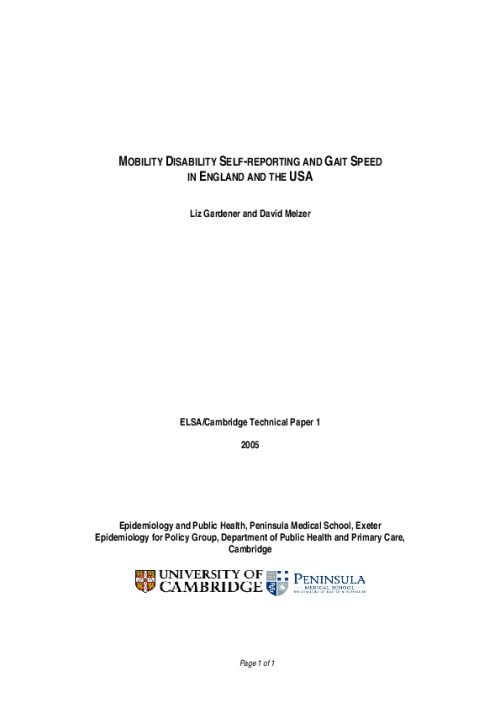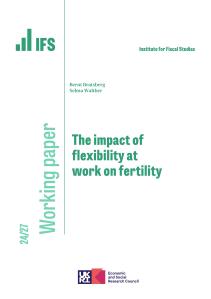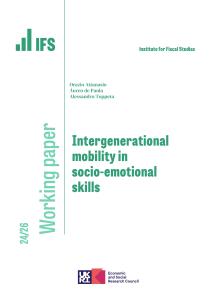Although crude rates of self-reported mobility disability were similar in ELSA and NHANES III, there was evidence that self-report was not entirely the same for different walking abilities, as measured by gait speed. Participants in English studies were more likely to report 'much difficulty or unable' if they were unable to do the gait speed test due to physical limitation or safety or they had a speed of less than or equal to 0.4m/s than in a comparable US study (NHANES III), (71% compared to 61%). This difference is unlikely to be due solely to differences between the studies in classification of 'unables', similar percentages of participants analysed classed as unable were found in the two studies (6% in ELSA compared to 4% in NHANES III), and when 'unables' were removed from the analysis, similar results were found. There were small differences in self-report for participants with gait speeds greater than 0.4m/s (13% compared to 12% for English and US study respectively).
Although the difference in self-reporting of mobility disability between ELSA and NHANES III was statistically significant, its effect is modest. The actual differences found are not large enough to warrant discontinuing further comparisons of self-report between English and US studies.










